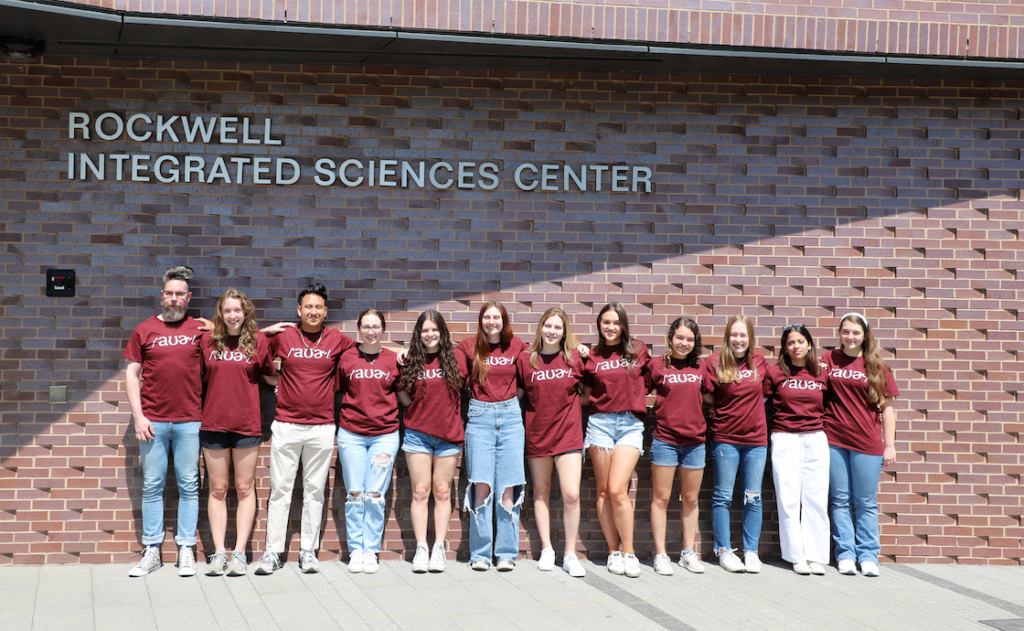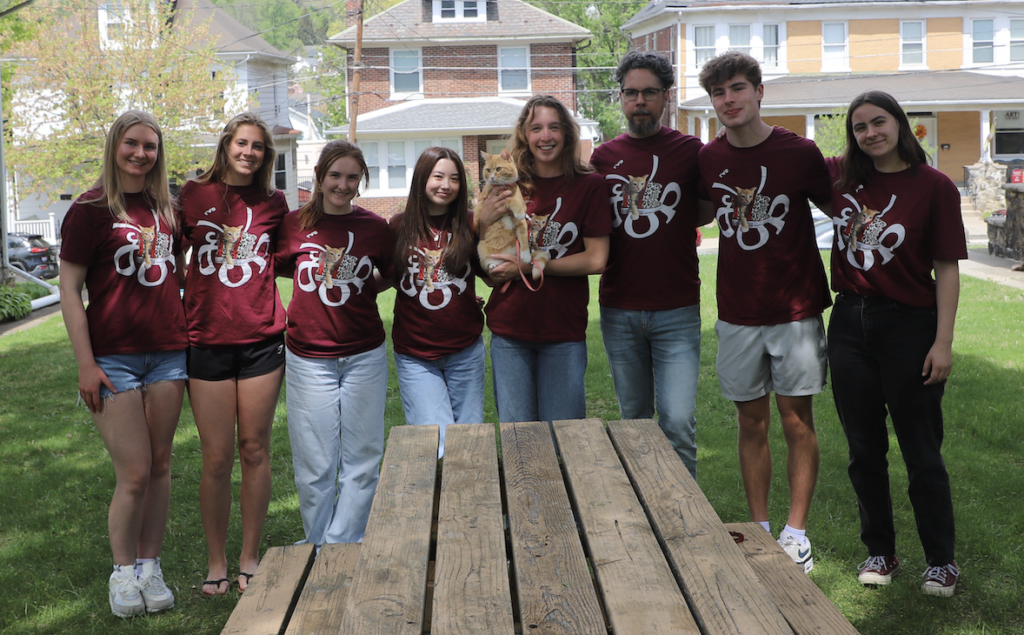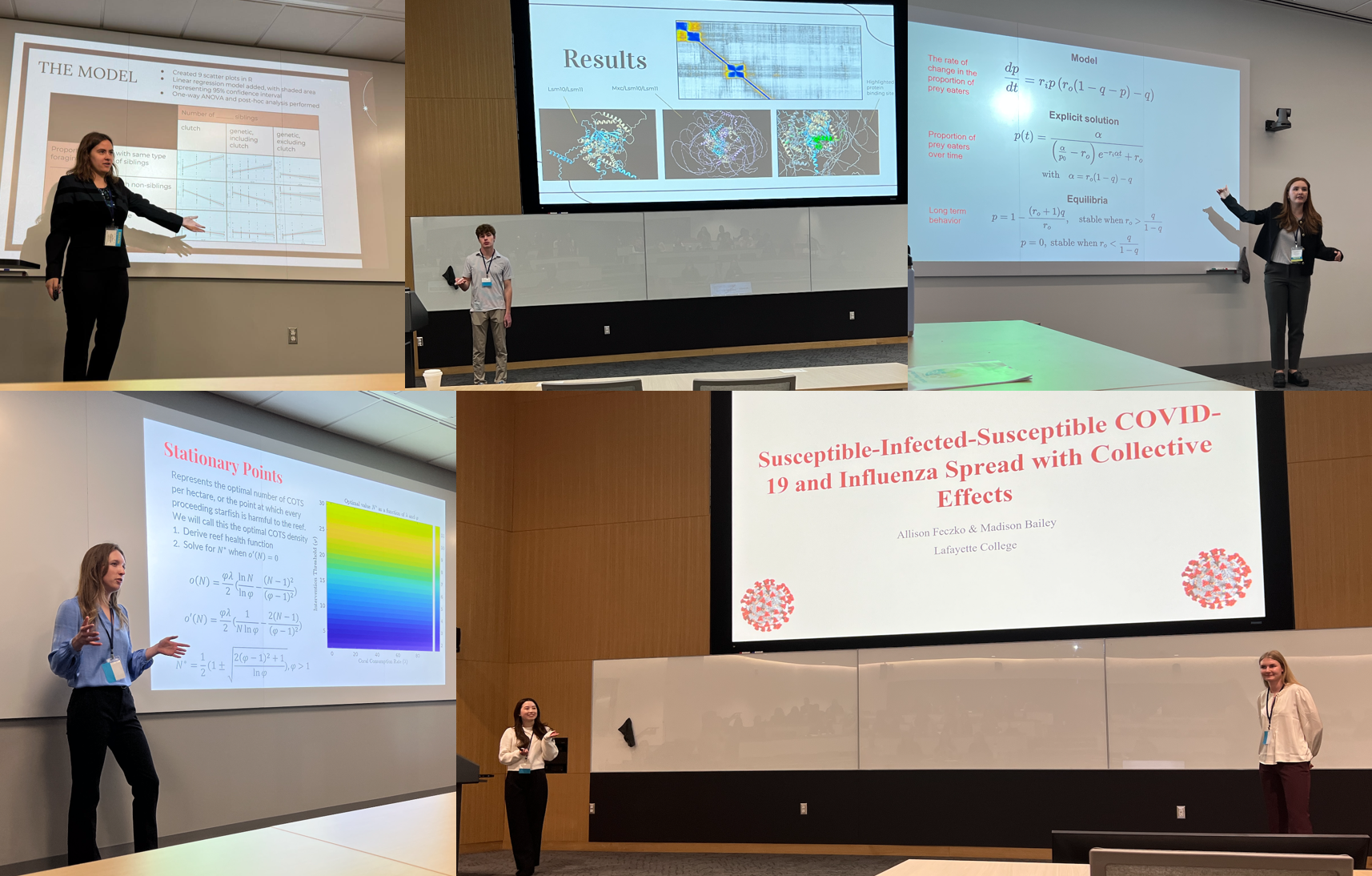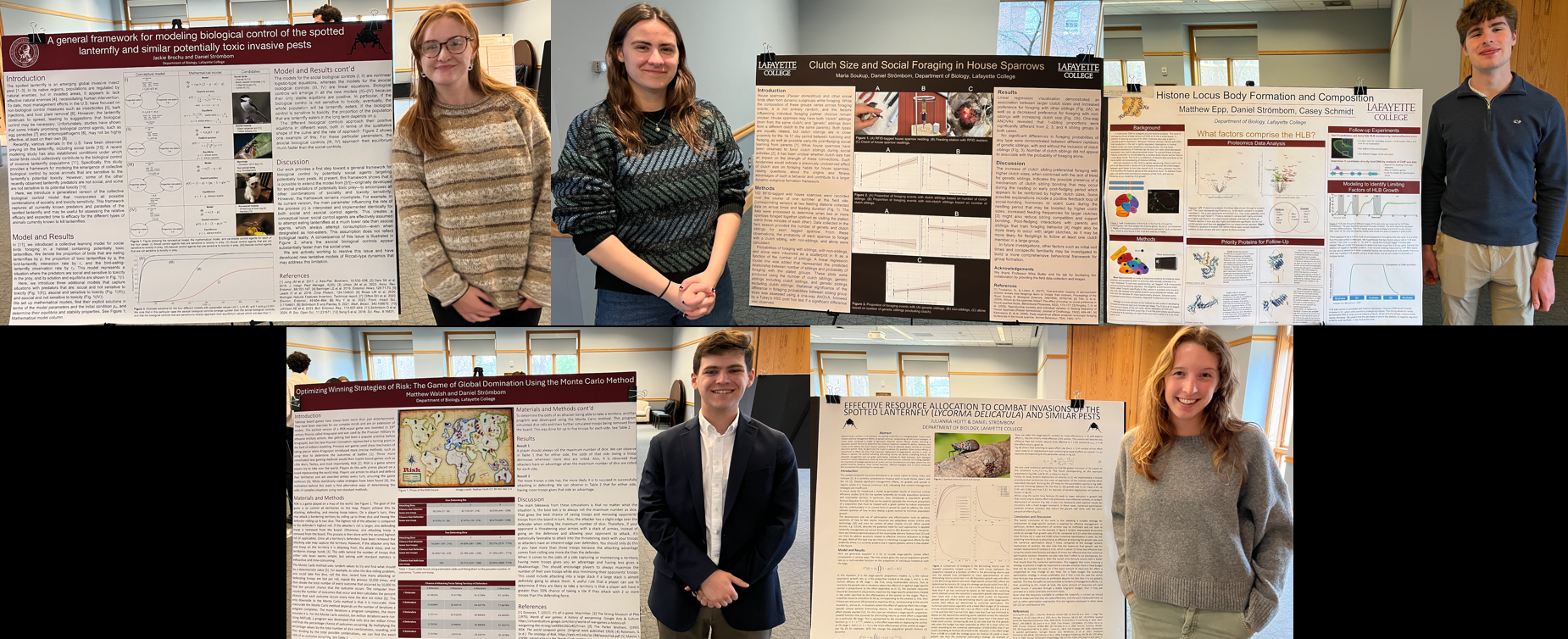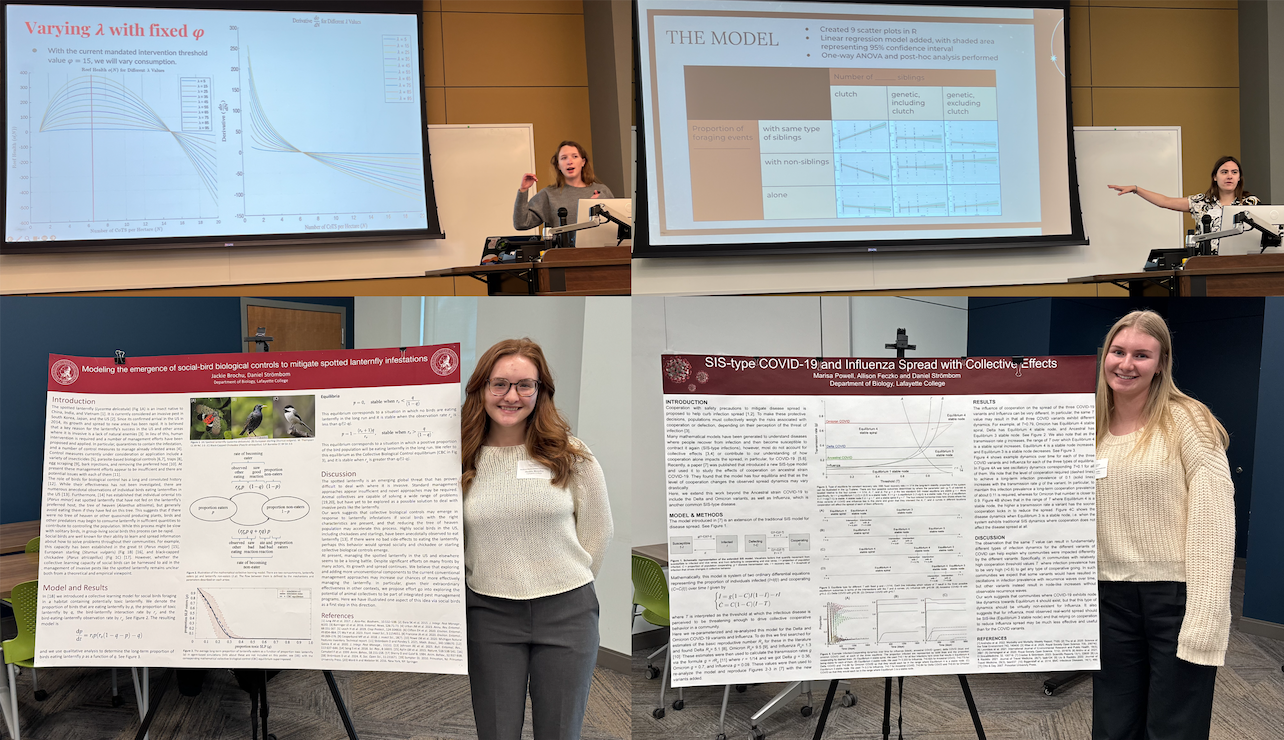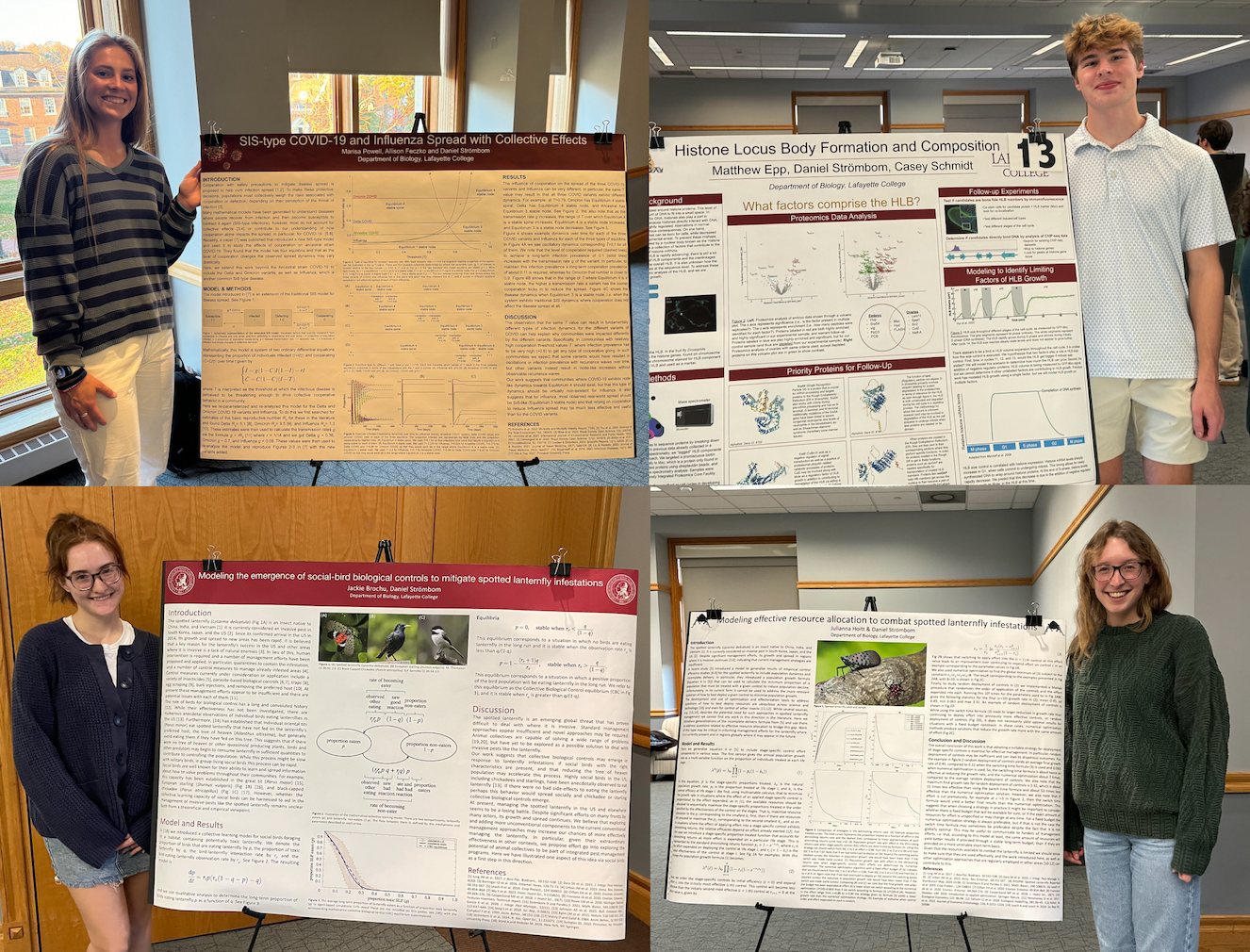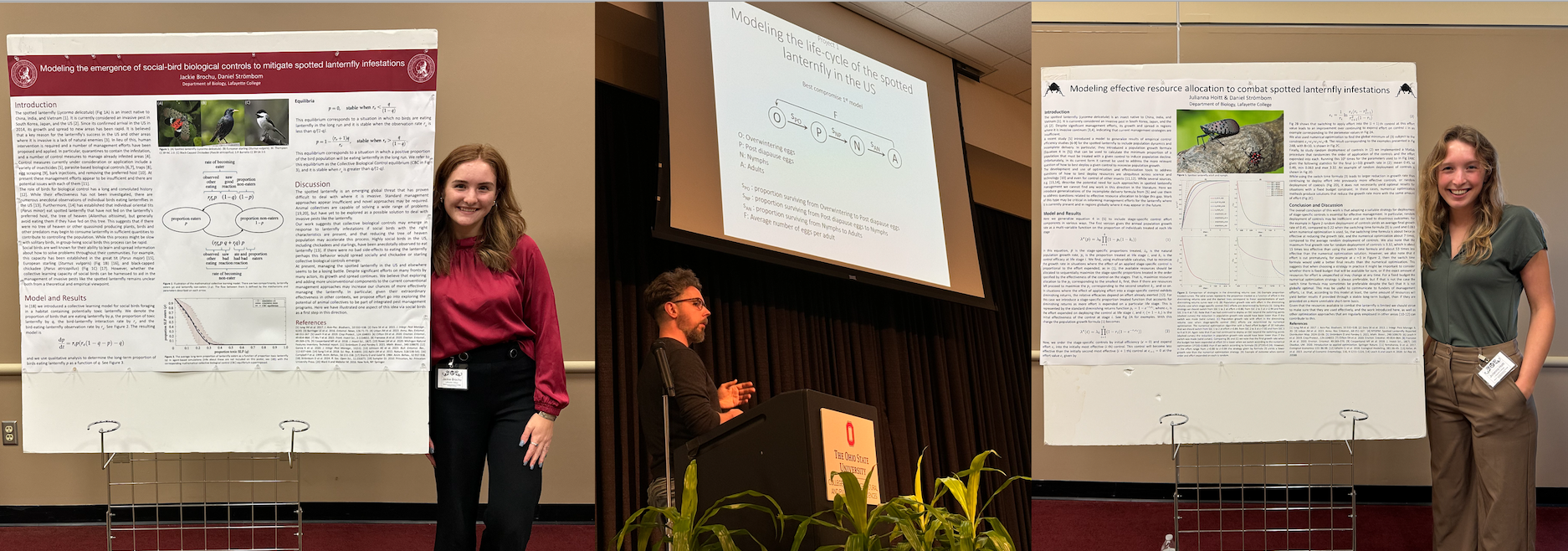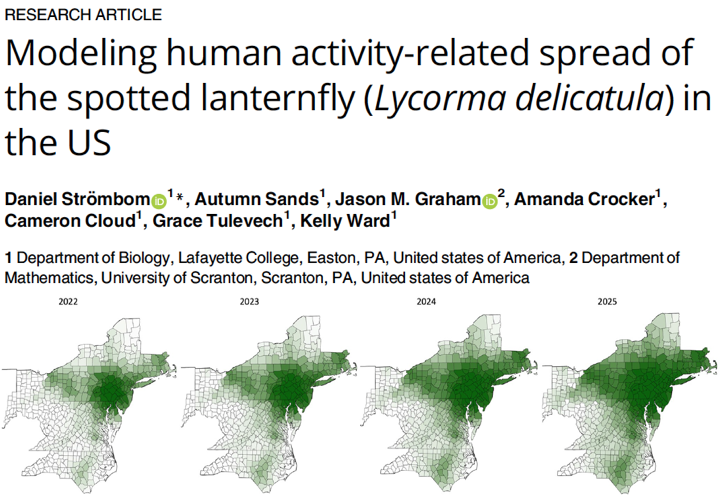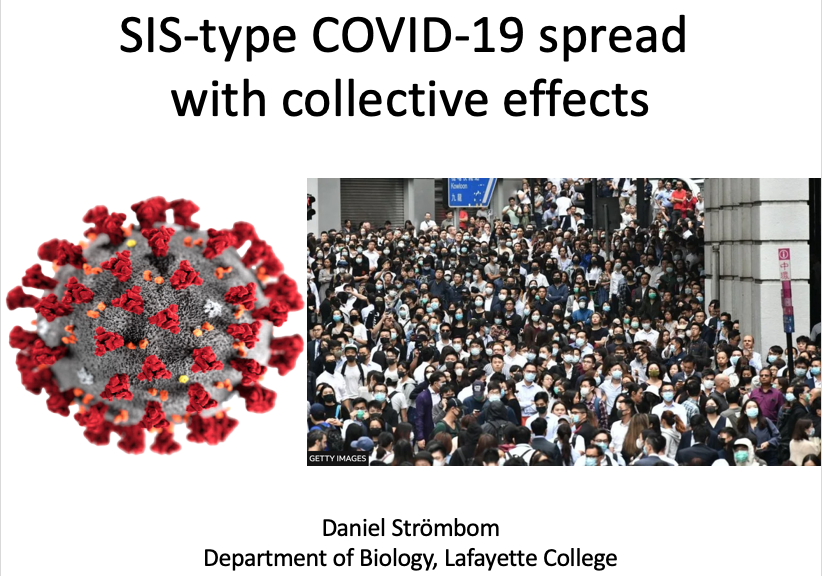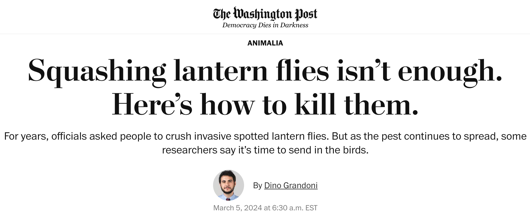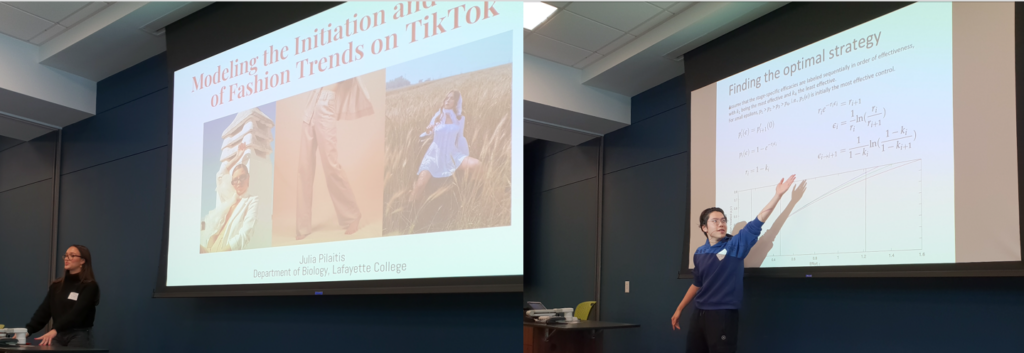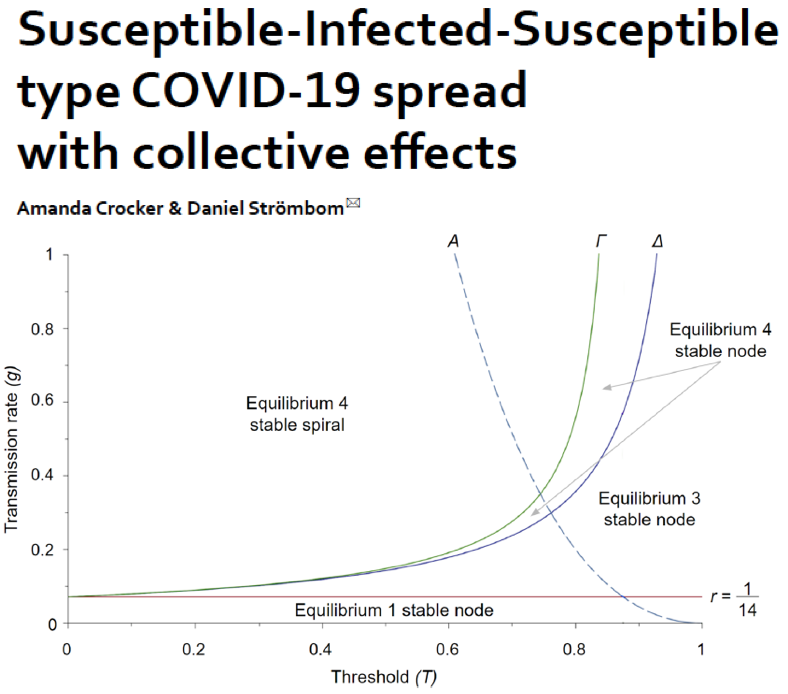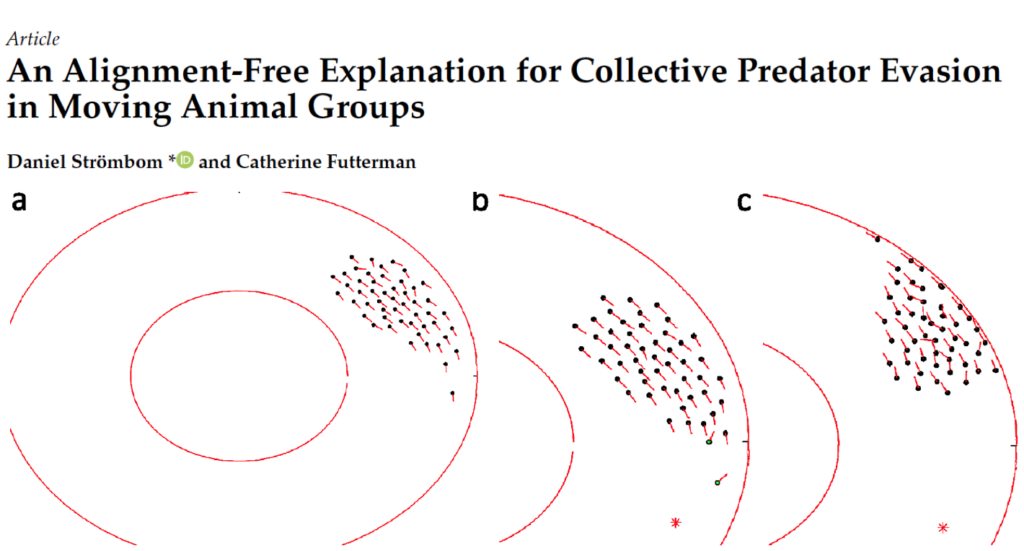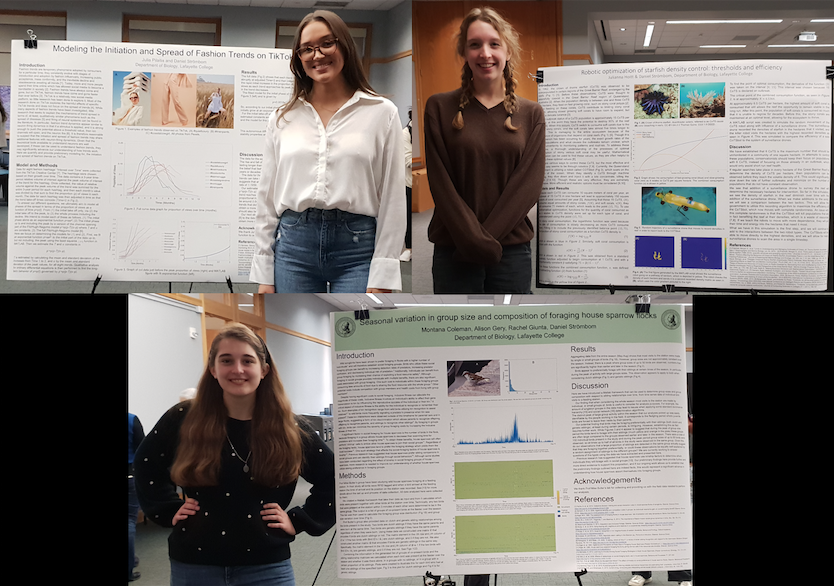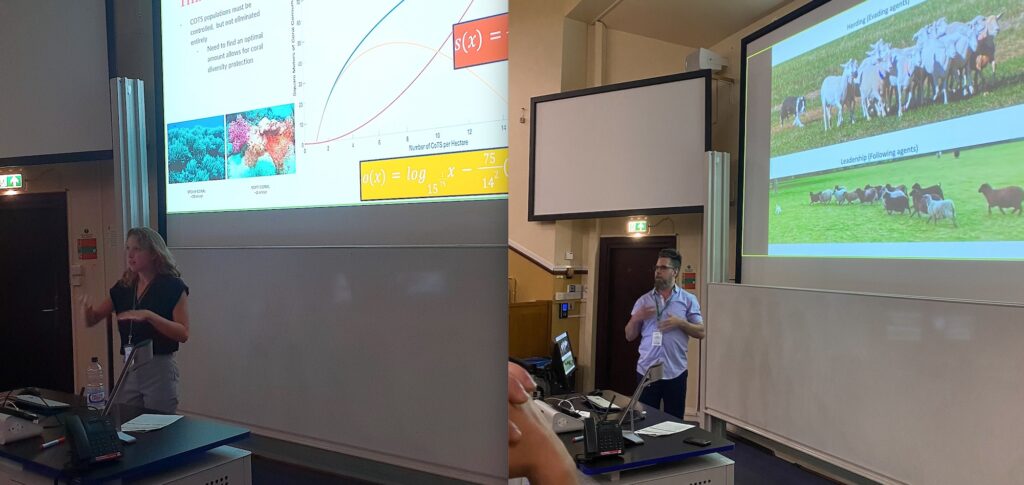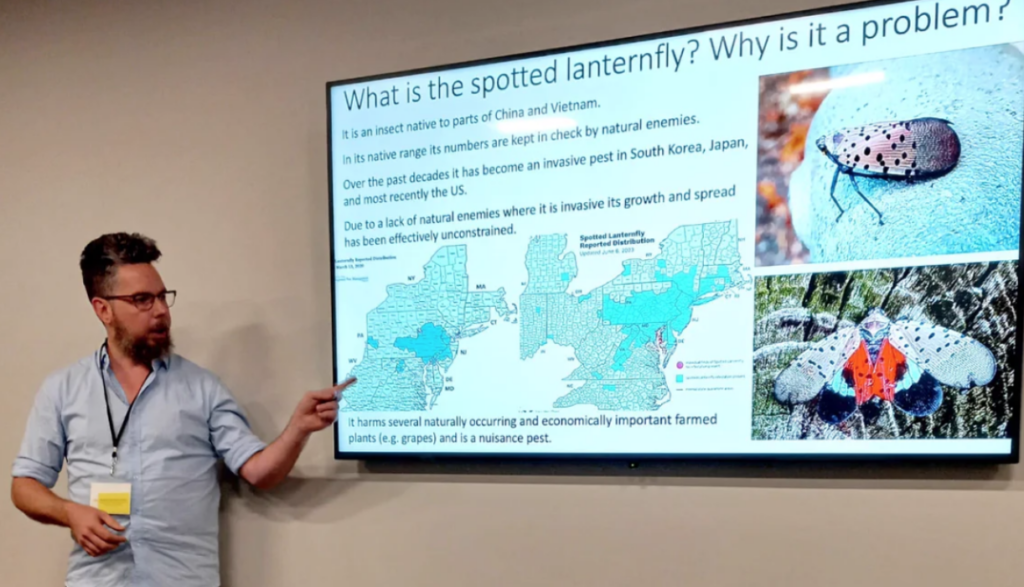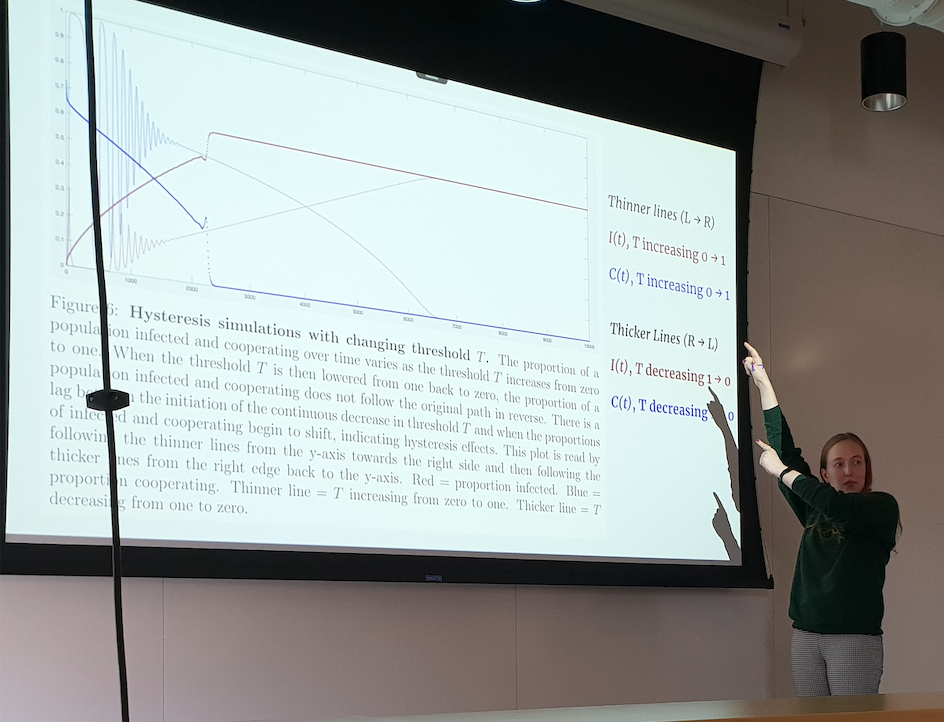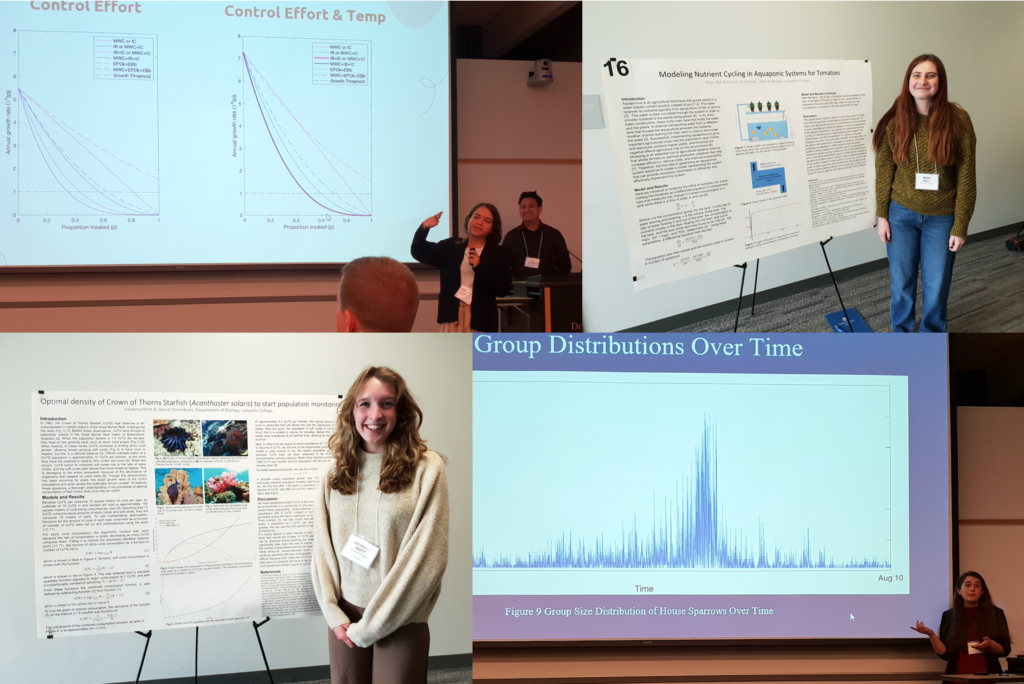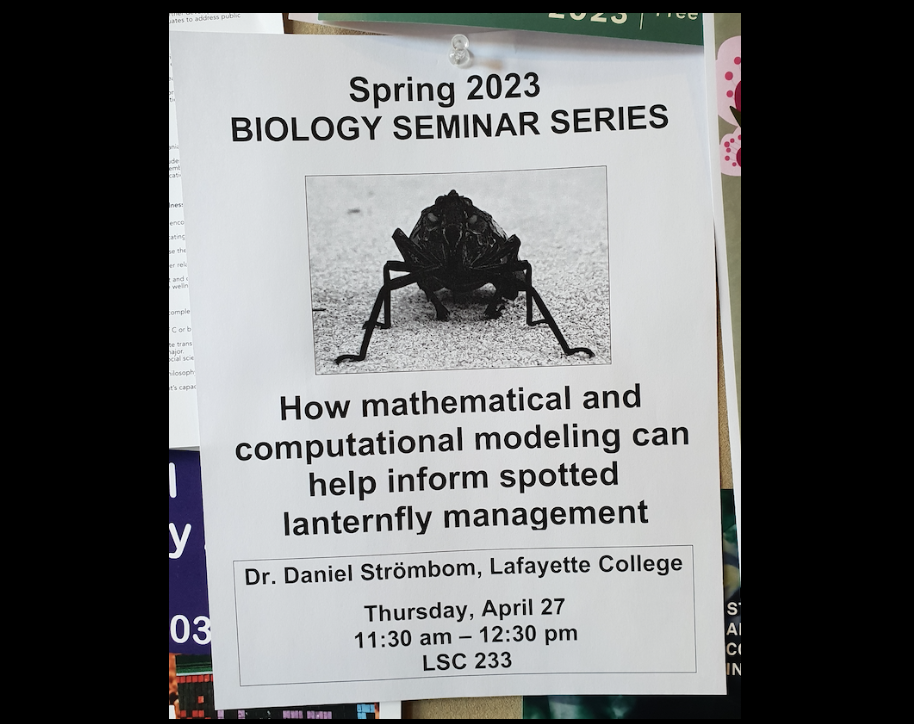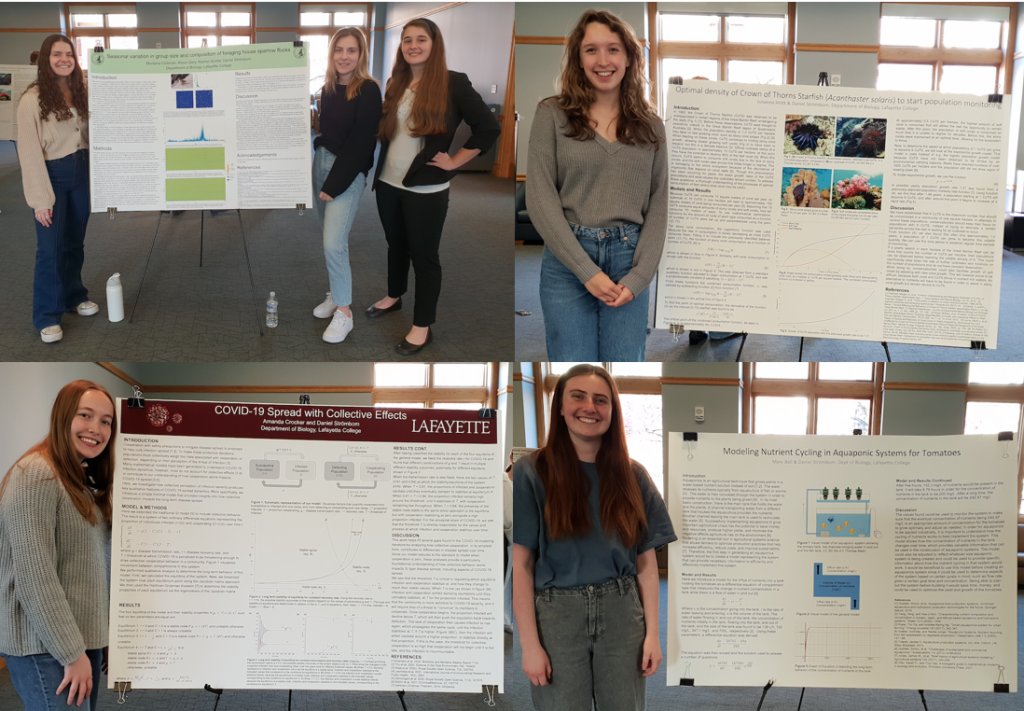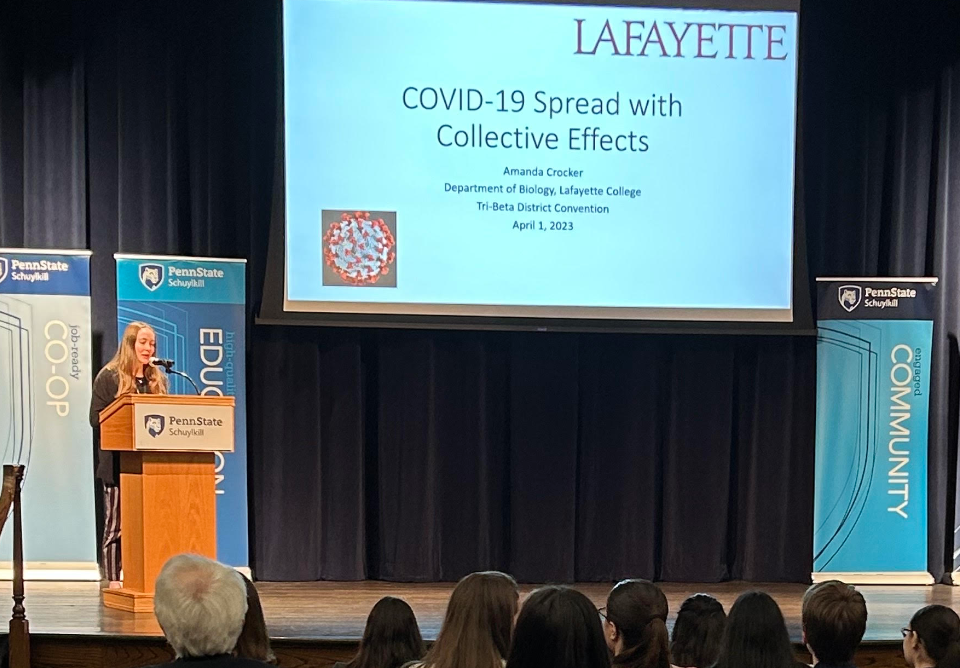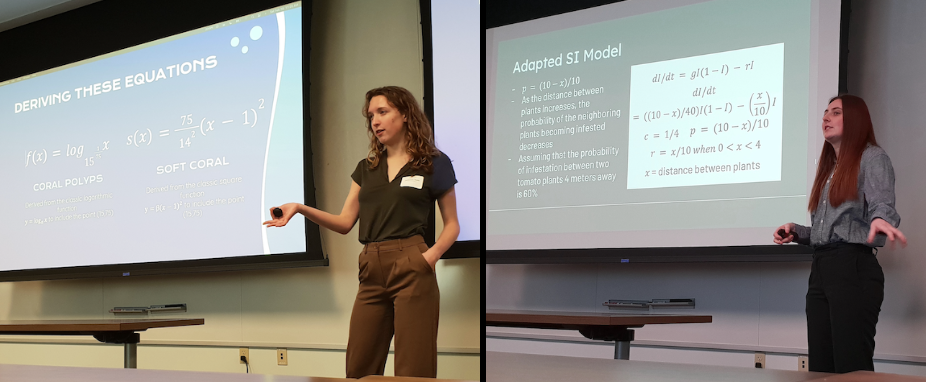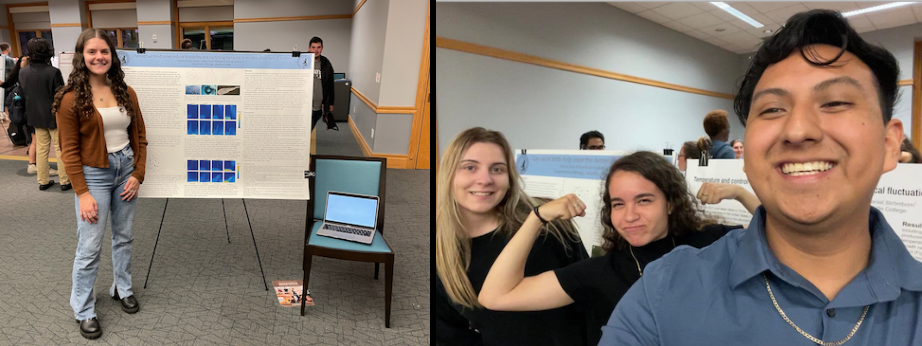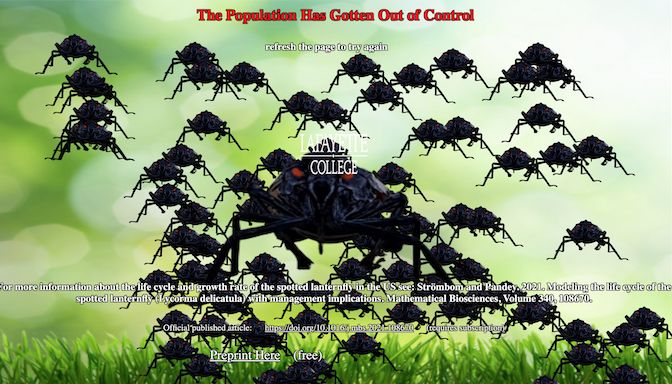Our lab uses mathematical, computational, and statistical methods to understand a number of biological phenomena better. In particular, we typically work to develop our mechanistic understanding of these using mathematical and computational modeling. The core of our research program is focused on collective motion in animal groups, shepherding systems, the spotted lanternfly, and we regularly take on other questions and projects from across biology where our expertise can be useful.
Recent journal articles (* Lafayette student coauthor)
- D Strömbom, J Hoitt*, J Hu*, S Pandey*, E Batchelar*. 2025. Effective resource allocation to combat invasions of the spotted lanternfly (Lycorma delicatula) and similar pests. Mathematics 13(18):2952.
- M Papadopoulou, M Ball*, P Bartashevich, ALJ Burns, V Chiara, MA Clark, BR Costelloe, M Fele, F French, S Hauert, MK Heinrich, JE Herbert-Read, J Hoitt*, CC Ioannou, T Landgraf, SR Matchette, G Polverino, D Sankey, D Scott, VH Sridhar, D Strömbom, V Trianni, TT Vo-Doan, AJ King. 2025. Active interactions between animals and technology: biohybrid approaches for animal behaviour research. Animal Behaviour (224)123160.
- D Strömbom, A Sands*, JM Graham, A Crocker*, C Cloud*, G Tulevech*, K Ward*. 2024. Modelling human activity-related spread of the spotted lanternfly (Lycorma delicatula) in the US. PLoS ONE 19(8): e0307754.
- D Strömbom, A Crocker*, A Gery*, G Tulevech*, A Sands*, K Ward*, S Pandey*. 2024. Modelling the emergence of social-bird biological controls to mitigate invasions of the spotted lanternfly and similar invasive pests. Royal Society Open Science 11: 231671.
- A Crocker* and D Strömbom. 2023. Susceptible-Infected-Susceptible type COVID-19 spread with collective effects. Scientific Reports 13, 22600.
- D Strömbom and C Futterman*. 2023. An alignment-free explanation of collective predator evasion in moving animal groups. Dynamics 3(4):793-802.
- AJ King, S Portugal, D Strömbom et al. 2023. Biologically inspired herding of animal groups by robots. Methods in Ecology and Evolution 2023;00:1-9.
- D Strömbom, G Tulevech*, Z Cullen*, R Giunta*. 2022. Asymmetric interactions induce bistability and switching behavior in models of collective motion. Dynamics 2(4):462-472.
- D Strömbom, S Nickerson*, C Futterman*, A DiFazio*, C Costello*, K Tunstrom. 2022. Bistability and switching behavior in moving animal groups. Northeast Journal of Complex Systems 4(1).
- D Strömbom and G Tulevech*. 2022. Attraction versus alignment as drivers of collective motion. Frontiers in Applied Mathematics and Statistics, 7:717523.
- D Strömbom and S Pandey*. 2021. Modeling the life cycle of the spotted lanternfly (Lycorma delicatula) with management implications. Mathematical Biosciences 240, 108670.
- D Strömbom and A Antia. 2021. Anticipation induces polarized collective motion in attraction based models. Northeast Journal of Complex Systems 3(1).
- D Strömbom, T Hassan*, WH Greis* & A Antia. 2019. Asynchrony induces polarized collective motion in attraction based models. Royal Society Open Science 6:190381.
Current members: Regan Dillon, Sabina Lehnert, Marisa Powell, Daniel Strömbom.
Alumni: Mary Ball, Jackie Brochu, Cameron Cloud, Montana Coleman, Cameron Costello, Amanda Crocker, Zachary Cullen, Alyssa DiFazio, Matthew Epp, Ally Feczko, Catherine Futterman, Alison Gery, Rachel Giunta, Hunter Greis, Tasnia Hassan, Julianna Hoitt, Jinrong Hu, Stephanie Nickerson, Swati Pandey, Julia Pilaitis, Autumn Sands, Abby Skidmore, Maria Soukup, Luis Tapia Morales, Grace Tulevech, Kelly Ward.
